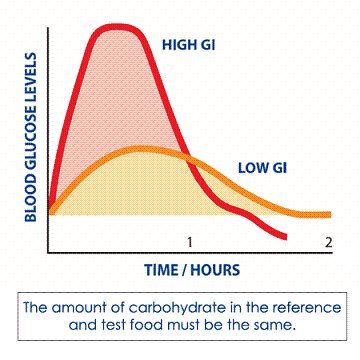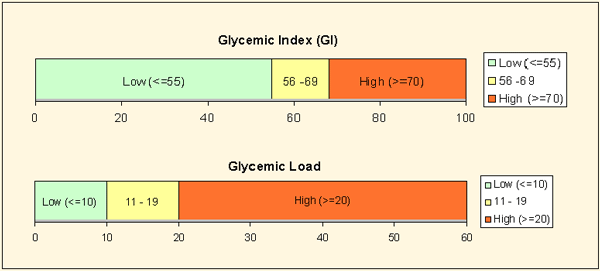Please take a few seconds to check out my new website Http://www.makeyourbestself.com
Facebook.com/makeyourbestself
Twitter.com/makeyourbstself
Pinterest.com/makeyourbstself
https://plus.google.com/u/0/b/113131083653805577438/113131083653805577438/about/p
https://www.youtube.com/channel/UCh9p6_fqUbm6DAMvU32EUbA
I mention Glycemic Index fairly often when talking about nutrition and carbohydrates. Glycemic Index is also being mentioned increasingly often in the media as well, so what is glycemic index (GI) exactly?
GI is the measure of how certain foods (mainly those with high carbohydrate content) affect blood sugar levels. The basic idea is that scientists give 10 people equal portions of a food and then measure their blood glucose levels in intervals over the next two hours. Foods that create a higher blood sugar level or a spike inside the two hour window are rated with a higher GI, while foods that have minimal effect of blood sugar levels are considered low GI.

The standard accepted scale rates glucose at 100 (being pure sugar) and everything else is based off of this baseline. For example: white bread is generally rated around 70 while an apple is around 40. Foods are generally classified as either: high GI (70 and above), medium GI (56-69), and low GI (1-55).
The basic idea is that by consuming foods with a lower GI you can control your blood sugar levels which provide you with several benefits. Lower blood sugar levels means less insulin,and less insulin means less fat storage. Consistently elevated blood sugar levels also lead to an increased risk of type 2 diabetes, while lower levels are associated with less frequent development of type 2 diabetes. Lower blood sugar levels are also linked with lower levels of cancer, lower cholesterol, and lower blood pressure.
There are still other factors that affect blood sugar levels such as: the time of day you eat, the amount of carbohydrates you eat (glycemic load), what you eat with the carbohydrates, and even herbs and spices can affect your blood sugar levels after a meal.

By choosing foods with a lower GI over there high GI counterparts you can control blood sugar levels and improve your health very quickly. Always choose: whole wheat over white bread, whole grain brown rice over white rice, sweet potatoes over white potatoes, and whole wheat pasta over regular white pasta. Just by making these small changes you can look and feel significantly better each day. Not all high GI foods are bad especially not in small amounts. Glycemic load is the actual amount of carbohydrates while GI is only the speed at which your body absorbs the carbohydrates. 5lbs of whole wheat pasta is just as bad as 2lbs of white pasta if losing weight is your main concern.

Carbohydrates are not the evil that most nutritionists and trainers portray them to be, but understanding carbohydrates and how they affect your metabolism and hormones is the key to controlling your weight. By using both glycemic load and glycemic index together in planning your meals you can have better control of your weight.
Please take a few seconds to check out my new website Http://www.makeyourbestself.com
Facebook.com/makeyourbestself
Twitter.com/makeyourbstself
Pinterest.com/makeyourbstself
https://plus.google.com/u/0/b/113131083653805577438/113131083653805577438/about/p
https://www.youtube.com/channel/UCh9p6_fqUbm6DAMvU32EUbA






0 comments:
Post a Comment